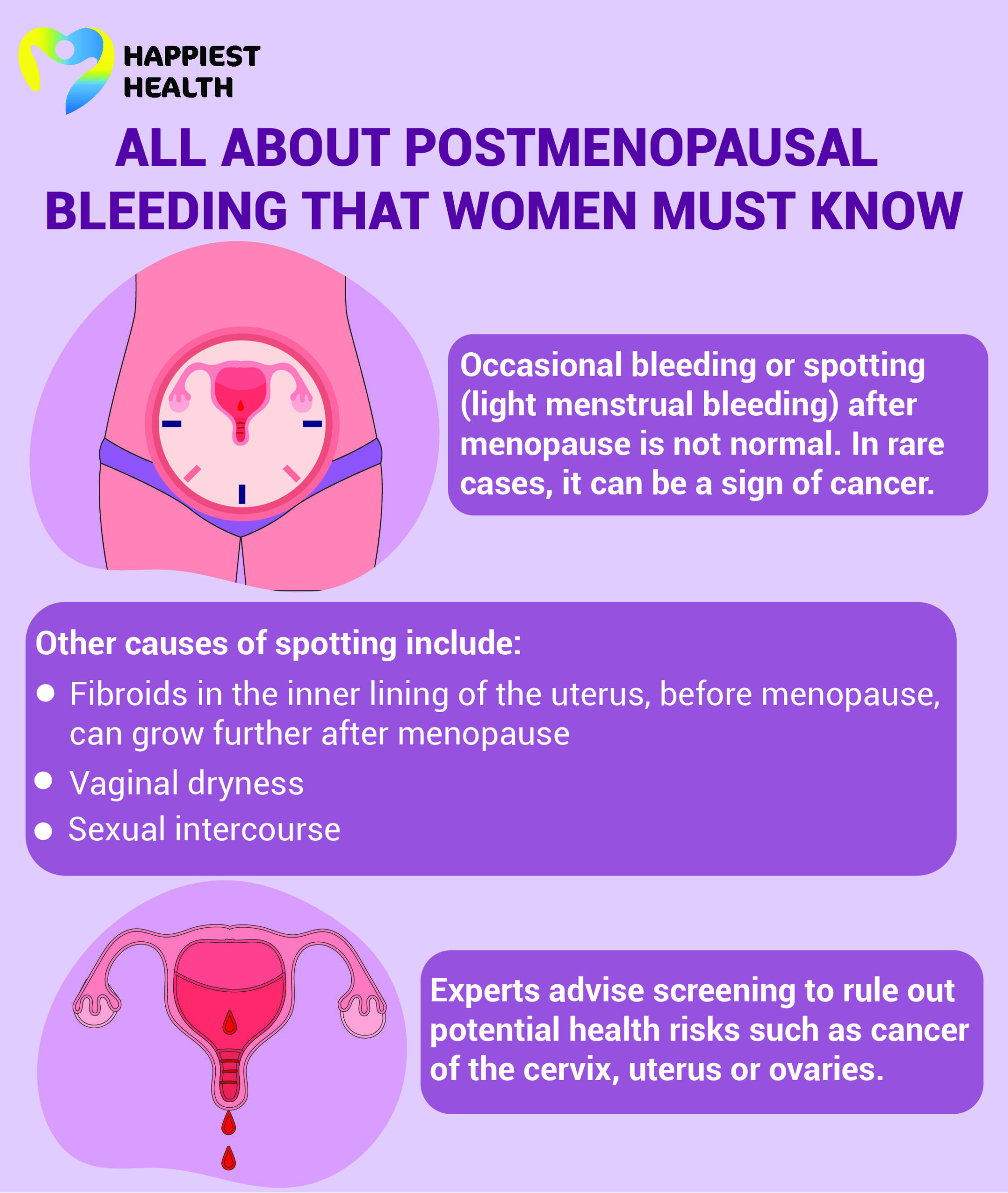
Many women think that attaining menopause marks the end of their monthly bleeding episodes. However, one must watch out for sudden spotting post-menopause. Postmenopausal bleeding could be a sign of cervical, vaginal and endometrial cancer. While postmenopausal bleeding or spotting is often ignored by women, experts reveal that it is not advised.
What is postmenopausal bleeding?
Postmenopausal bleeding refers to any bleeding that occurs after menopause (absence of a period for over 12 consecutive months), explains Dr Suruchi Desai, senior consultant, obstetrics and gynecology, Nanavati Max Super Speciality Hospital, Mumbai.
“While occasional spotting isn’t uncommon in the years leading up to menopause or perimenopause, any bleeding after confirmed menopause should not be ignored. It needs immediate medical evaluation,” warns Dr Desai.
Common causes of postmenopausal bleeding

“Bleeding after menopause is usually due to abnormal hormonal activity within the endometrium (the innermost lining of the uterus that sheds during periods),” explains Dr Shanthala Thuppanna, laparoscopic surgeon, obstetrician and gynecologist, Cloudnine Hospitals, Bangalore. She shares that after menopause, such hormonal activity is not normal.
However, Dr Desai assures, “Not all causes of post-menopausal bleeding are serious.” It could be due to:
- Endometrial or uterine polyps: Abnormal growth in the inner lining of the uterus
- Endometrial hypertrophy: Abnormal thickening of the uterine lining
- Uterine fibroids: A non-cancerous tumor that grows in and around the uterus
- Excessive vaginal dryness
- Non-gynecologic causes, such as urinary tract issues
Postmenopausal bleeding: Could it be cancer?
Dr Thuppanna warns, “In rare cases, postmenopausal bleeding could suggest precancerous or cancerous growth in the cervix, uterus or ovaries.” Women must not ignore these early signs of cancer, she stresses.
Early interventions for endometrial, uterine or vaginal cancer can help in early diagnosis, say experts.
Don’t shy away from medical advice
Shailaja R was 57 when she was shocked to wake up and find a blood-stained bedsheet. It had been five years since her menopause. Shailaja, who hails from Kerala, recalls that she had attained menopause when she was 52. Thus, this bleeding — though she had no pain — was worrisome.
“Back then, I was in Mumbai with my son’s family. Though I was hesitant, my family insisted that I get it checked,” she shares. “I initially brushed it off assuming it was a one-off incident,” says Shailaja, adding that the bleeding reduced to spotting on the fifth day. She eventually underwent screening and a pelvic ultrasound scan, which revealed that her postmenopausal bleeding was due to minor hormonal fluctuations that caused uterine polyps.
Uterine polyps or even uterine fibroids can be treated through surgical removal, says Dr Thuppanna. Thickened endometrium (5 mm and above) is clinically scraped to avoid any precancerous growths, she informs.
Shailaja, who was diagnosed with uterine polyps, underwent surgery. Following this, she has never had any bleeding.
Risk factors for postmenopausal bleeding
Dr Thuppanna adds that certain conditions increase the risk of postmenopausal bleeding in women. These include:
- Diabetes
- Hypertension
- High cholesterol
- Obesity
- Nulliparity (seen in women who have never given birth to a baby)
- Menopausal hormone therapy (during the transition)
What tests are recommended if postmenopausal bleeding occurs?
Dr Thuppanna explains the process of investigation to rule out possibilities of cervical, endometrial or ovarian cancer.
“The first line of analysis is the clinical examination of cervix, uterus or ovaries wherein we check for any abnormal growth or tumors,” says Dr Thuppanna. This is followed by:
- Pap smear test: Collecting cells from the cervix to screen for cervical cancer,
- Pelvic ultrasound scanning: An imaging procedure of the cervix, uterus or ovaries and the surrounding area,
- Transvaginal ultrasonography: An imaging test to assess the endometrial lining
Further, Dr Thuppanna recommends the following tests if there are suspicious abnormal growths in the pelvic or uterine regions.
Hysteroscopy: A testing procedure that involves inserting a thin tube with a light and a camera into the cervix and uterus through the vagina for accurate diagnosis.
Biopsy: A medical test that removes a tissue cell from the cervix, uterus or vagina to assess cancerous or precancerous.
Takeaways
- Bleeding after menopause, including occasional spotting, is not normal and requires gynecological screening.
- It could be caused due to multiple reasons, including endometrial or uterine polyps, uterine fibroids, and even non-gynecological reasons. In certain cases, it could be a signifier of uterine, vaginal or endometrial cancer.
- Testing early helps in the early detection of any anomalies.

















